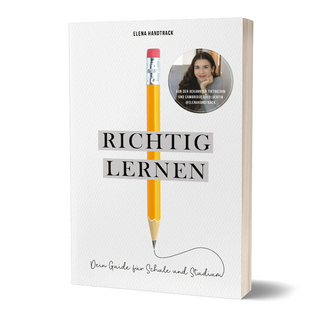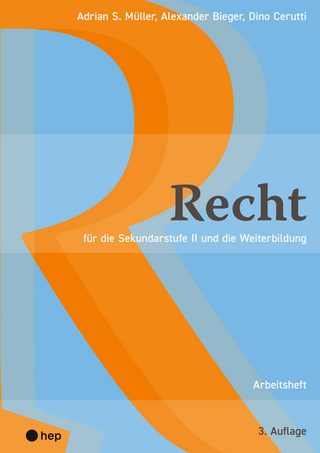
History for Common Entrance 13+ Revision Guide (for the June 2022 exams)
Galore Park Publishing Ltd (Verlag)
978-1-4718-0902-6 (ISBN)
- Titel ist leider vergriffen;
keine Neuauflage - Artikel merken
Exam Board: ISEB
Level: 13+
Subject: History
First Exam: Autumn 2013
History for Common Entrance 13+ Revision Guide reflects the style and content of the new ISEB Common Entrance syllabus and provides essential support and guidance for thorough exam preparation.
- Endorsed by ISEB
- Consolidates all the key information required for Common Entrance
- Provides tips and advice on how to answer both the evidence and essay questions
- Includes 'Test yourself' exercises for focused revision
Also available from Galore Park www.galorepark.co.uk:
- History for Common Entrance 13+ Exam Practice Questions
- History for Common Entrance 13+ Exam Practice Answers
Ed Adams was educated at Sutton Valence School and the University of Exeter, where he gained degrees in Law and Medieval Studies. He lives in Kent.
i: Introduction
A: Medieval Realms: Britain 1066–1485
1: The Norman Conquest
1.1: Background to the Conquest
1.2: Preparations for the invasion
1.3: The Battle of Stamford Bridge, 25 September 1066
1.4: The Battle of Hastings, 14 October 1066
2: Conquered England
2.1: Medieval rule and the Feudal System
2.2: Revolts and rebellions
2.3: New buildings
2.4: The Domesday Book
2.5: Life in the manor
3: The sons of William I
3.1: William II (1087–1100)
3.2: Henry I (1100–35)
3.3: Matilda
3.4: The Church
3.5: Monasteries and nunneries
4: From civil war to Henry II
4.1: Stephen (1135–54)
4.2: Henry II (1154–89)
4.3: Thomas Becket
4.4: Eleanor of Aquitaine and the sons of Henry II
5: Richard I, the Crusades and King John
5.1: The First Crusade
5.2: Richard I (1189–99) and the Third Crusade
5.3: John and the Angevin Empire
5.4: John and the Church
5.5: Magna Carta
6: Henry III and the Edwards
6.1: Henry III (1216–72)
6.2: Edward I (1272–1307)
6.3: Wales and Scotland
6.4: Edward II (1307–27)
6.5: The fall of Edward II
6.6: Edward III (1327–77)
6.7: The Battle of Crécy, 26 August 1346
6.8: The last years of Edward III
7: Life in the Middle Ages
7.1: Castles
7.2: The Jews
7.3: Medieval women
7.4: Medieval health and the Black Death
8: Richard II and life in the towns
8.1: Richard II (1377–99) and the Peasants’ Revolt
8.2: The fall of Richard II
8.3: Towns
8.4: Guilds
8.5: Town government, law and order
9: The three Henrys
9.1: Henry IV (1399–1413)
9.2: Henry V (1413–22)
9.3: The Battle of Agincourt, 25 October 1415
9.4: Joan of Arc
9.5: Henry VI (1422–71)
9.6: The coming of civil war
10: The Wars of the Roses
10.1: The first war (1459–61)
10.2: Edward IV (1461–83)
10.3: The second war (1470–71)
10.4: Edward V and Richard III (1483–85)
10.5: The Battle of Bosworth, 22 August 1485
B: The Making of the United Kingdom: 1485–1750
11: Henry VII (1485–1509)
11.1: Securing the throne
11.2: The two pretenders
11.3: The tax rebellions
11.4: Foreign policy
12: Henry VIII (1509–47)
12.1: Early life and reign
12.2: Thomas Wolsey
12.3: The rise of Protestantism
12.4: The King’s Great Matter
12.5: Cromwell and the Reformation
12.6: The six wives of Henry VIII
13: Edward VI (1547–53) and Mary I (1553–58)
13.1: Edward VI and the Protestant surge
13.2: Lady Jane Grey and Mary I
13.3: Wyatt’s Rebellion (1554)
13.4: The Catholic resurgence
14: Elizabeth I (1558–1603)
14.1: Early life and reign
14.2: The Elizabethan Settlement
14.3: Mary, Queen of Scots
14.4: War with Spain
14.5: Elizabeth’s government
15: Life in the sixteenth century
15.1: Trade
15.2: Poverty and the Poor Laws
15.3: Town and country
15.4: Women in the sixteenth century
16: James I (1603–25) and Charles I (1625–49)
16.1: James I and religion
16.2: James I and Parliament
16.3: Charles I and religion
16.4: Charles I and Parliament
16.5: Causes of the Civil War
17: Civil War (1642–49) and the Interregnum (1649–60)
17.1: The English Civil War
17.2: The Battle of Marston Moor, 2 July 1644
17.3: Oliver Cromwell and the New Model Army
17.4: The trial and execution of Charles I
17.5: Cromwell and Parliament
17.6: Ireland and Scotland
17.7: Richard Cromwell and the Restoration
18: Charles II (1660–85) and James II (1685–88)
18.1: Charles II
18.2: Plague and fire
18.3: Charles II and religion
18.4: James II and the Monmouth Rebellion
18.5: The Glorious Revolution
18.6: Culture and science
19: William III and Mary II (1689–1702) and Anne (1702–14)
19.1: William III and Mary II
19.2: Ireland and France
19.3: The Act of Settlement (1701)
19.4: Anne and war with France
19.5: The Battle of Blenheim, 13 August 1704
19.6: The Act of Union (1707)
20: George I (1714–27) and George II (1727–60)
20.1: George I and the 1715 Jacobite Rebellion
20.2: Parliament and Walpole
20.3: Trade and the empire
20.4: George II and war with Europe
20.5: The 1745 Jacobite Rebellion
C: Britain and Empire: 1750–1914
21: The Seven Years’ War
21.1: Background
21.2: William Pitt the Elder
21.3: Wolfe and the fall of Quebec
21.4: British victories and the end of the campaign
22: The American Rebellion and World War
22.1: Background
22.2: The outbreak of war
22.3: The early war
22.4: The later war
23: The French Revolution and the Napoleonic Wars
23.1: The French Revolution
23.2: William Pitt the Younger
23.3: Horatio Nelson
23.4: The Trafalgar campaign
23.5: Arthur Wellesley, Duke of Wellington
23.6: The Waterloo campaign
24: Dissent and calls for political reform, 1815–48
24.1: The rise of protest
24.2: The Reform Acts
24.3: Chartism
25: The Agricultural and Industrial Revolutions
25.1: The Agricultural Revolution
25.2: The Industrial Revolution
25.3: Public health
26: The transportation revolution
26.1: Roads
26.2: Canals
26.3: Rail
26.4: Telford and Brunel
27: Social and industrial reform
27.1: The slave trade
27.2: The abolition movement
27.3: Prison reform
27.4: Poor Law reform
27.5: Employment reform
28: Religious life, 1750–1914
28.1: Catholicism and the Oxford Movement
28.2: Methodism and the Evangelical movement
29: Victorian England: success, war and politics
29.1: Victoria’s life
29.2: Victorian politics
29.3: The Great Exhibition
29.4: The Crimean War
29.5: Seacole and Nightingale
29.6: Women's suffrage
30: The British Empire and the road to war
30.1: India
30.2: The Indian Mutiny
30.3: South Africa
30.4: The Anglo-Boer War, 1899–1902
30.5: Great Power rivalries, 1871–1914
ii: Essay question answers
iii: Test yourself answers
Appendix 1: Timelines
iv: The monarchs of England, 1066–1485
v: The monarchs of England, 1485–1750
vi: The monarchs of Great Britain and the United Kingdom, 1750–1900
Appendix 2: Family trees
vii: For Chapters 1–2
viii: For Chapters 3–5
ix: For Chapter 6
x: For Chapters 8–11
xi: For Chapters 12–14
xii: For Chapters 16–20
xiii: For Chapters 21–30
| Erscheint lt. Verlag | 28.3.2014 |
|---|---|
| Verlagsort | Tenterden |
| Sprache | englisch |
| Maße | 210 x 320 mm |
| Gewicht | 620 g |
| Themenwelt | Schulbuch / Wörterbuch |
| ISBN-10 | 1-4718-0902-1 / 1471809021 |
| ISBN-13 | 978-1-4718-0902-6 / 9781471809026 |
| Zustand | Neuware |
| Haben Sie eine Frage zum Produkt? |
aus dem Bereich


